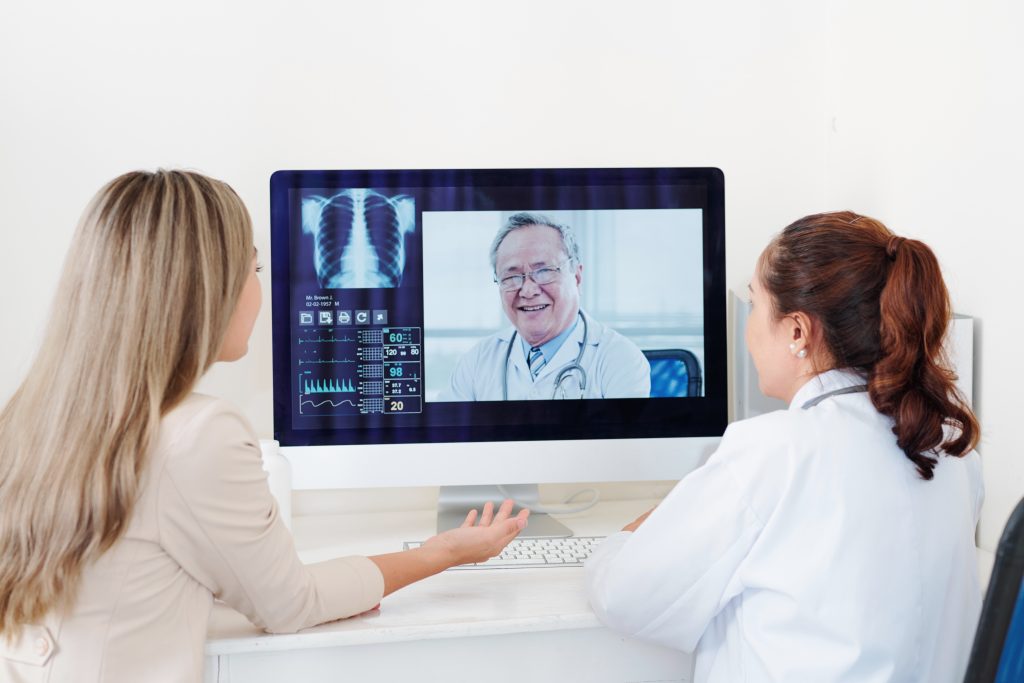Healthy care organizations are at their core, a business, and that business model is driven by outcomes and results, but also the patient experience. Understanding the importance of patient experience is especially integral to health care because the experience a patient has is going to dictate how well they comply with their care plan and their overall health.
When a patient feels dissatisfied with their experience in a health care setting, they’re more likely to be non-compliant which can create worse outcomes.
Technology that improves the patient experience is a valuable asset for providers and facilities, and the following are some specific ways the use of tech can help in this area.
Online Appointment Scheduling
Sometimes simple technology can go a long way to boosting patient experience. One example is offering the ability for patients to schedule appointments and maintain them online.
Research shows that digitizing appointment access is a core element of overall patient satisfaction rather than requiring patients to call for scheduling.
What this also does is free up administrative staff to take on the most important calls, rather than being tied up and unable to schedule appointments without long wait times.
It creates a more direct path of access to a live person when needed when the scheduling burden is taken off the shoulders of administrators.
Other ways technology can ease the frustration that comes with administrative processes includes offering online bill payments and access to insurance information.
Many people report dropping previous health care providers because of a lack of digital engagement with patients.
Increased Accessibility
There’s another way accessibility is proving to change the way medicine is practiced in the U.S. and around the world. People are increasingly turning to telehealth, and that trend was likely sped-up by the effects of the coronavirus.
Telehealth offers a more streamlined management of chronic conditions, and it provides accessibility and convenience, which are two of the biggest drivers in decision-making by patients.
Offering telehealth and similar options also benefits care providers. They can see more patients in less time, andspend more time on those appointments that need it most, rather than on routine care or chronic disease management appointments.
Increased Patient-Provider Communication
In traditional health care models, patients and provides have pretty minimal communication for the most part, and the provider tends to be in the driver’s seat as far as the implementation of that communication.
Now, there’s a push for more direct communication through options like email and live chat.
There’s also more direct communication in the form of reminders from providers to patients to check their blood pressure, take their medications, etc.
There are increasing introduction of Patient Relationship Management Platforms as well, which use data to improve patient satisfaction and quality of care.
Improved Collaboration and Record Transparency
An estimated 400,000 people are thought to die because of preventable medical harm each year. In the U.S., that makes this the third-most-common killer behind only heart disease and cancer.
These medical errors can occur when providers don’t have enough information about a patient or drugs they take; however, now providers and hospitals are using electronic health records.
There are also digital upgrades that can reduce the risks of medical errors, such as electronic prescribing and clinical flags. Hospitals also use the PACS system which enhances patient care by providing a comprehensive, centralized, and scalable system that enables efficient management and sharing of medical images, thus improving diagnosis accuracy, speeding up treatment times, and enhancing collaboration among healthcare professionals.
With more transparency in medical records and real-time access, not only will care providers have more collaboration with one another, but patients will also be more empowered in their care.
Artificial Intelligence
One interesting area of technology that may begin to impact health care and the patient experience is artificial intelligence or AI. It’s one of the most compelling new technologies in the industry.
With AI, providers might be able to start using predictive analysis, which would then let them anticipate the needs of patients instead of only reacting once a problem or concern has arisen.
In the summer of 2019, IBM Watson Health announced they were progressing on the use of AI to improve cancer care treatment and clinical decision-making.
There is a lot of room in health care to improve the patient experience in its entirety, and a lot of that is going to rely on new technology. From mobile tools to make the administrative tasks easier on everyone, to tools that provide more direct communication between providers and their patients, the advancements are promising.
With more patient satisfaction and a better experience, health outcomes are likely to improve as well, including for chronic conditions.
